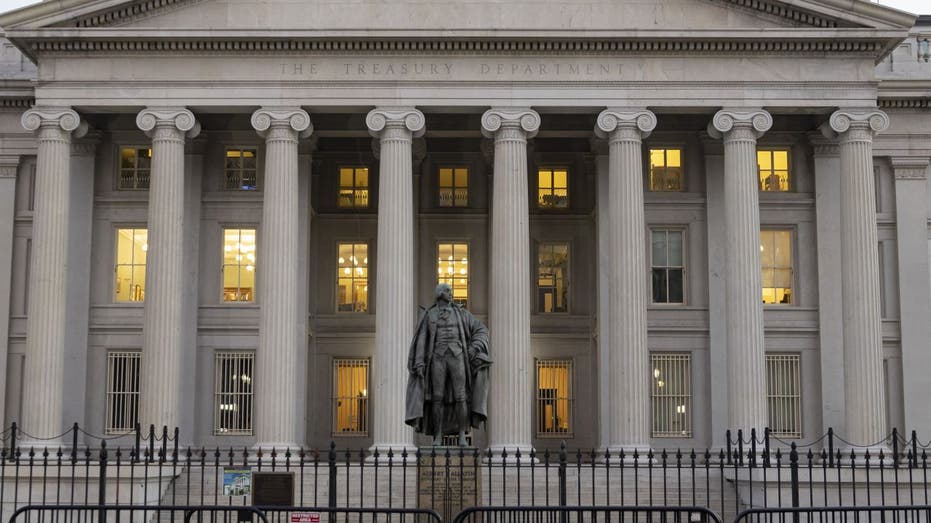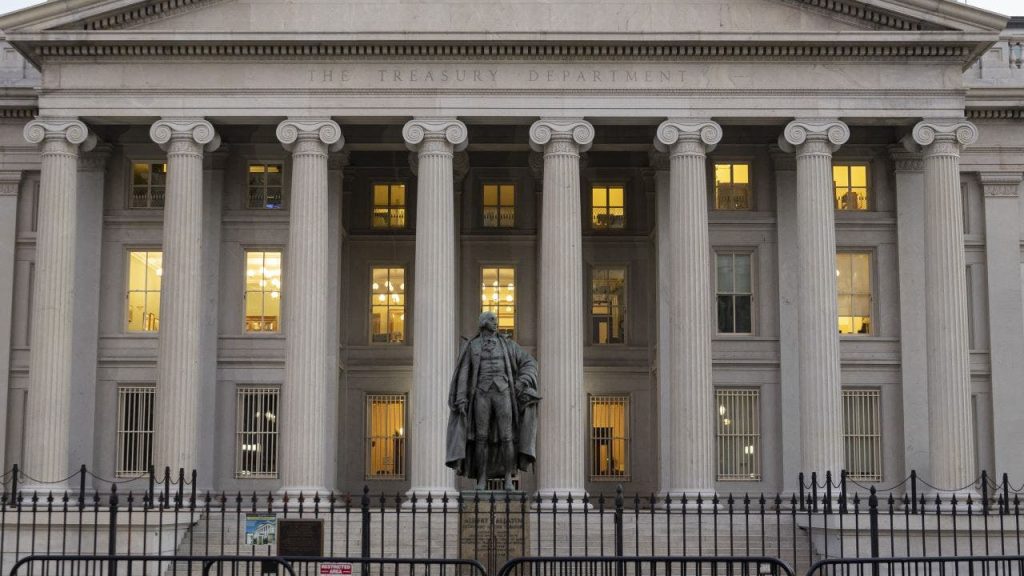Atlas Merchant Capital founding partner and CEO Bob Diamond asks what the U.S. is doing in doubling the debt on “The Claman Countdown.”
The market for U.S. Treasuries plays a critical role in how the federal government finances its spending through debt and holds the title of the world’s largest. It also has the most liquid government bond market, though the sector has been in focus recently amid market volatility due to uncertainty over tariffs.
U.S. Treasuries are typically viewed as a safe haven for investors during tumultuous times in the economy and financial markets due to their backing by the federal government, serving as a “risk-free” asset with a very low chance of default and being used as a benchmark for other fixed-income securities. Due to the longstanding status of Treasuries as a safe haven, foreign governments hold about 24% of the total U.S. government debt.
The recent turmoil in financial markets brought on by President Donald Trump’s tariffs initially caused investors to flock to Treasuries and pushed 10-year yields to below 4%, though a sell-off ensued as the uncertainty exacerbated investors’ concerns and yields rose to around 4.5%. Yields on 10-year Treasuries fluctuated between roughly 3.7% and 4.7% in 2024.
That recent volatility also raised concerns that foreign governments and investors were selling Treasuries due to concerns about their relative safety amid persistent and growing federal budget deficits as well as uncertainty caused by tariffs and trade policy.
BESSENT WARNS CHINA ON CURRENCY MOVES, SAYS BOND MARKET ‘DELEVERAGING’ ISN’T SYSTEMIC ISSUE

U.S. Treasuries, which are issued by the Treasury Department, have historically been viewed as a safe-haven asset by investors. (Nicolas Economou/NurPhoto via Getty Images)
A recent analysis by Allianz economists noted that, ordinarily, when yields on Treasuries rise, the U.S. dollar gets stronger as foreign capital pursues those higher yields. However, the dollar weakened as yields rose, in this instance, which “suggests major holders were not only selling Treasuries but also converting the proceeds into currencies – possibly reallocating to European markets.”
Here’s what Treasury Department data from the end of February – before the recent sell-off in Treasuries – showed as the 10 largest foreign holders of U.S. Treasuries:
Japan: $1.125 trillionChina: $784 billionUnited Kingdom: $750 billionCayman Islands: $418 billionLuxembourg: $413 billionCanada: $406 billionBelgium $395 billionFrance: $354 billionIreland: $339 billionTaiwan: $295 billion
TRUMP’S TARIFFS PROJECTED TO INCREASE UNEMPLOYMENT BUT ESCAPE MASS LAYOFFS: ALLIANZ
Other countries with significant holdings of U.S. Treasuries as of the end of February include:
Switzerland: $291 billionHong Kong: $274 billionSingapore: $260 billionIndia: $228 billionNorway: $162 billionSaudi Arabia: $126 billionSouth Korea: $125 billionUnited Arab Emirates: $120 billionGermany: $104 billion

Treasury Secretary Scott Bessent has said the recent bond market sell-off was due to deleveraging, which he added didn’t appear to be systemic. (Kayla Bartkowski/Getty Images)
All other countries hold a combined $1.642 trillion in U.S. Treasuries, while the grand total, including the major holders of Treasuries, is $8.817 trillion as of the end of February, the Treasury Department reported.
Foreign holders selling off their U.S. Treasuries on a large scale could create challenges for the federal government’s budget as interest rates could rise in response.
That’s due to the inverse correlation between bond prices and yields: Bond prices fall when yields rise as investors seek higher returns on their investment; and bond prices rise as yields fall, with investors paying a higher-price premium on what’s viewed as a relatively safer asset due to the lower yield.
HOW TRUMP’S TARIFFS COULD IMPACT THE LABOR MARKET

Rising federal budget deficits have raised concerns about the desirability of Treasuries to investors as a safe haven. (iStock)
Last fiscal year, the federal government spent about $881 billion on interest expenses stemming from the need to service the national debt, which exceeds $36 trillion. It marked the first time that federal spending on interest expenses was larger than two major line items on the government’s ledger – the Department of Defense’s budget and Medicare – and contributed to the more than $1.8 trillion annual budget deficit.
Those interest expenses are about two and a half times the amount spent in 2021 due to a larger national debt, which grew at a faster pace in the last several years due to spending on COVID relief measures as well as higher interest rates on the debt.
GET FOX BUSINESS ON THE GO BY CLICKING HERE
This fiscal year, interest expenses are projected to rise further to $952 billion, or a record 3.2% of gross domestic product (GDP), according to an analysis by the nonpartisan Congressional Budget Office (CBO). That trend is projected to continue, with interest costs reaching an estimated 5.4% of GDP by 2055; a decade later, the CBO projects the average interest rate on the national debt will exceed the economic growth rate.

